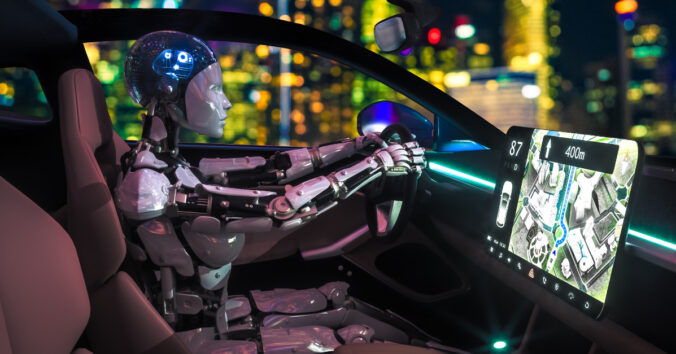Artificial Intelligence, a revolution in the automotive industry

Artificial intelligence (AI) is a revolution in the automotive industry. It is already present in many vehicles, and it is radically transforming the way we move.
For companies in the automotive sector, the integration of AI offers new development opportunities. Consequently, it also represents significant challenges both at the level of consumers and at the level of companies in the sector.
What opportunities can Artificial Intelligence offer?
Artificial Intelligence is the key to autonomous driving. It allows vehicles to move without human intervention. They are able to interpret road signals and also make real-time driving decisions, faster and more accurate than human drivers. This could be very useful for people with reduced mobility. By improving vehicle safety, accessibility, and convenience, AI can help people with disabilities get around safer, easier, and more independently.
By 2030, Artificial Intelligence could reduce road accidents by 80%, according to a study by McKinsey & Company. Indeed, AI systems can use sensors such as cameras, radars, and lidars to detect dangers such as pedestrians, cyclists, other vehicles, and obstacles on the road. They improve vehicle safety by automatically braking if necessary.
In addition, AI can be programmed to optimize fuel consumption and reduce traffic jams. It analyzes data on engine operation and identifies opportunities for improvement. This could include adjusting engine parameters, changing engine mapping, or using technologies such as hybridization or micro-hybridization.
Also, AI can analyze vehicle shape data and identify opportunities to reduce drag. We are talking about changing the shape of the vehicle, using more aerodynamic materials, or fitting devices such as fins or spoilers.
AI is used to manage energy in the vehicle more efficiently. It means managing battery charging, selecting the optimal driving mode, or predicting future energy needs.
This could help reduce carbon emissions and improve air quality. However, there are also challenges to overcome.
What are the challenges presented by Artificial Intelligence?
First of all, the cost of integrating AI into automotive vehicles is expensive. The systems are complex and require a lot of data to process and collect. This is very expensive. In addition, automotive companies must invest heavily in research and development to integrate efficient and affordable AI systems. Finally, the cost of vehicles increases.
Then, regulations: governments still need to develop regulations to guarantee the safety and effectiveness of AI in vehicles. These regulations must be flexible enough to allow innovation, but they must also guarantee the protection of road users. Automotive companies must ensure that their AI systems comply with current security standards.
Finally, consumer acceptance: consumers must be ready to accept autonomous vehicles and other applications of AI in cars. Automating driving tasks could result in job losses for human drivers. AI could also raise ethical questions, such as liability in the case of an accident caused by an autonomous vehicle.
Conclusion
The integration of AI into automotive vehicles is an ongoing revolution that will have a profound impact on the automotive industry. Automotive companies must adapt to this revolution to remain competitive. Consumers, for their part, must be ready to accept the changes that AI will bring to the way they drive.
For further information about our activity, check our website: https://www.sneci.com/ or contact us at info@sneci.com.





